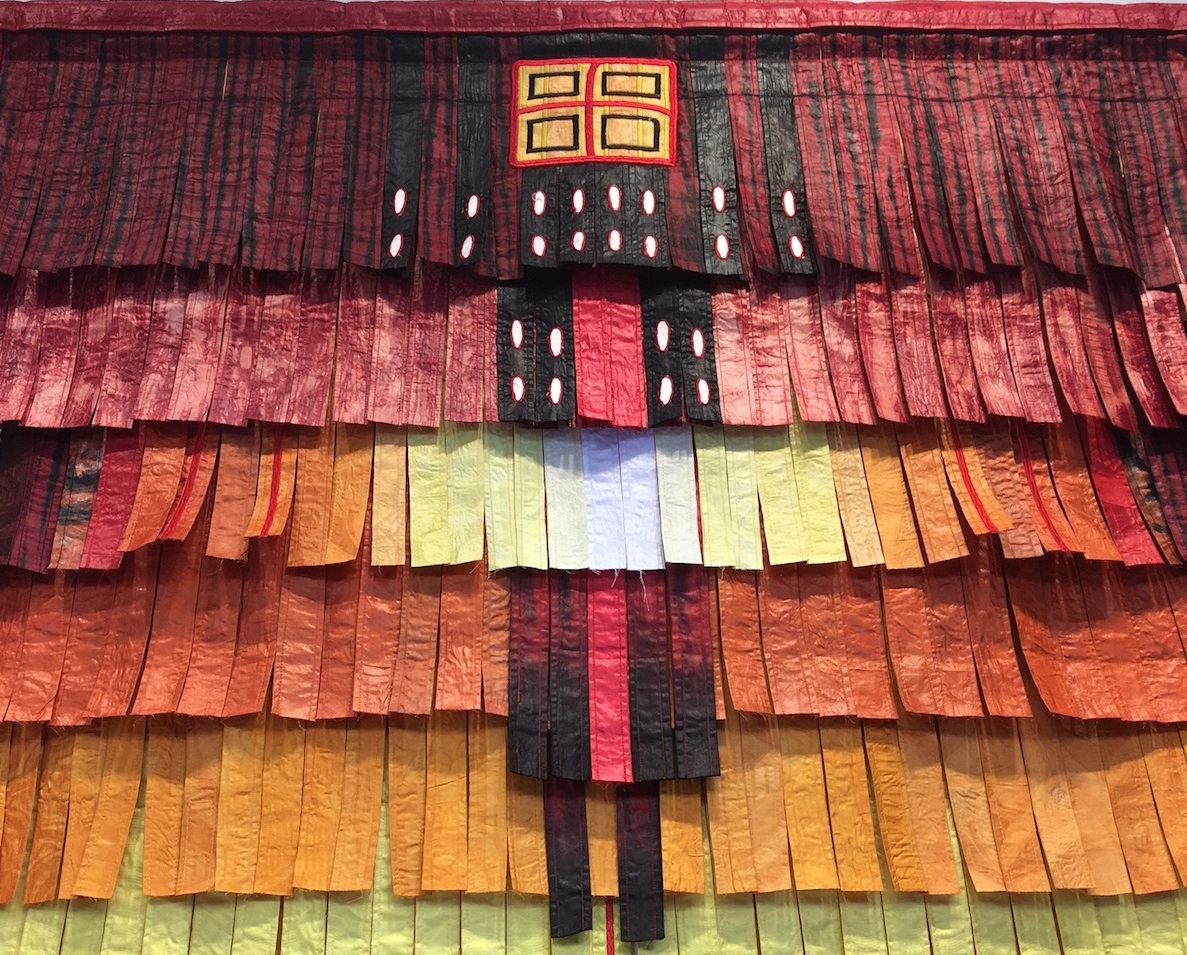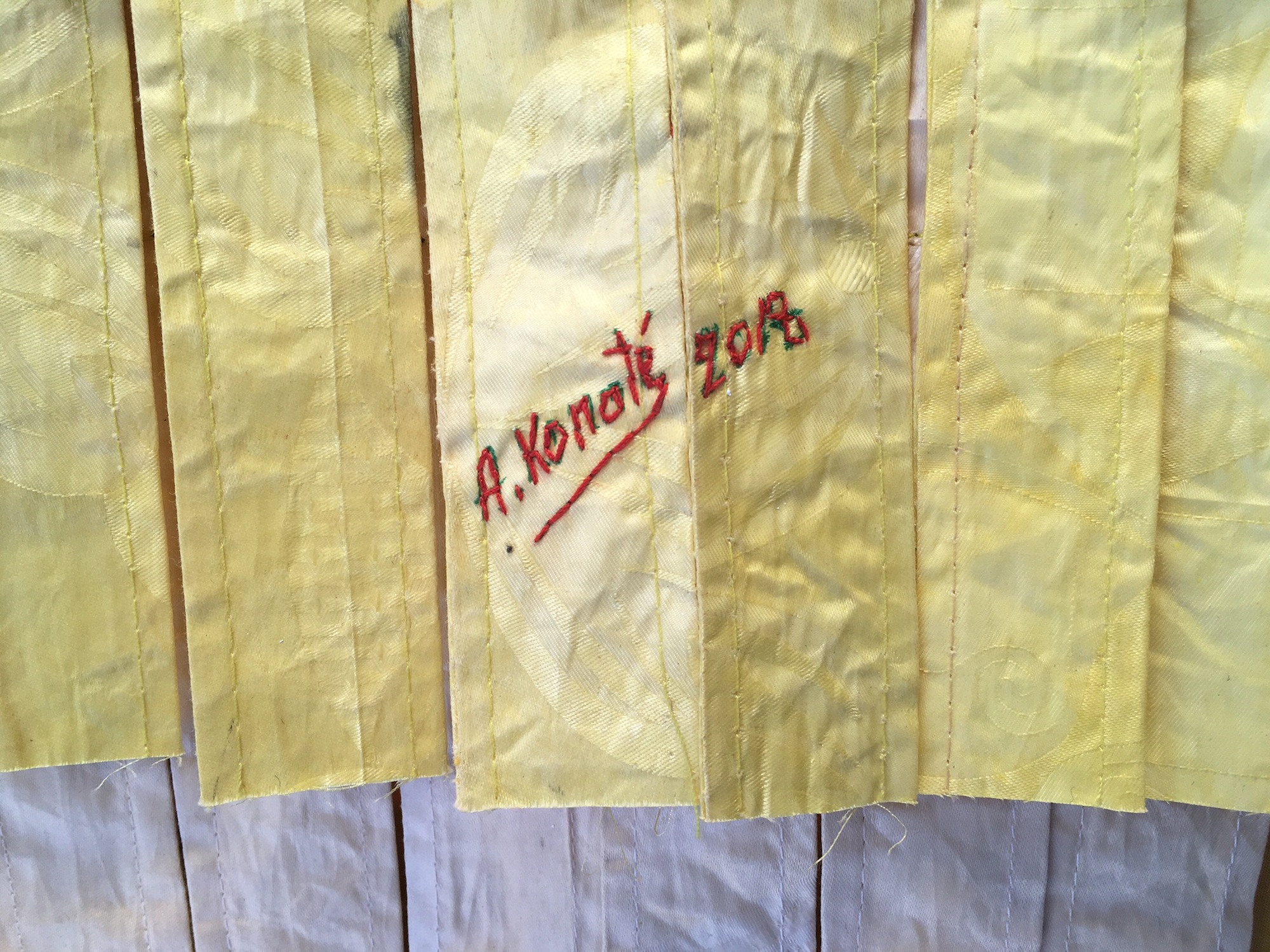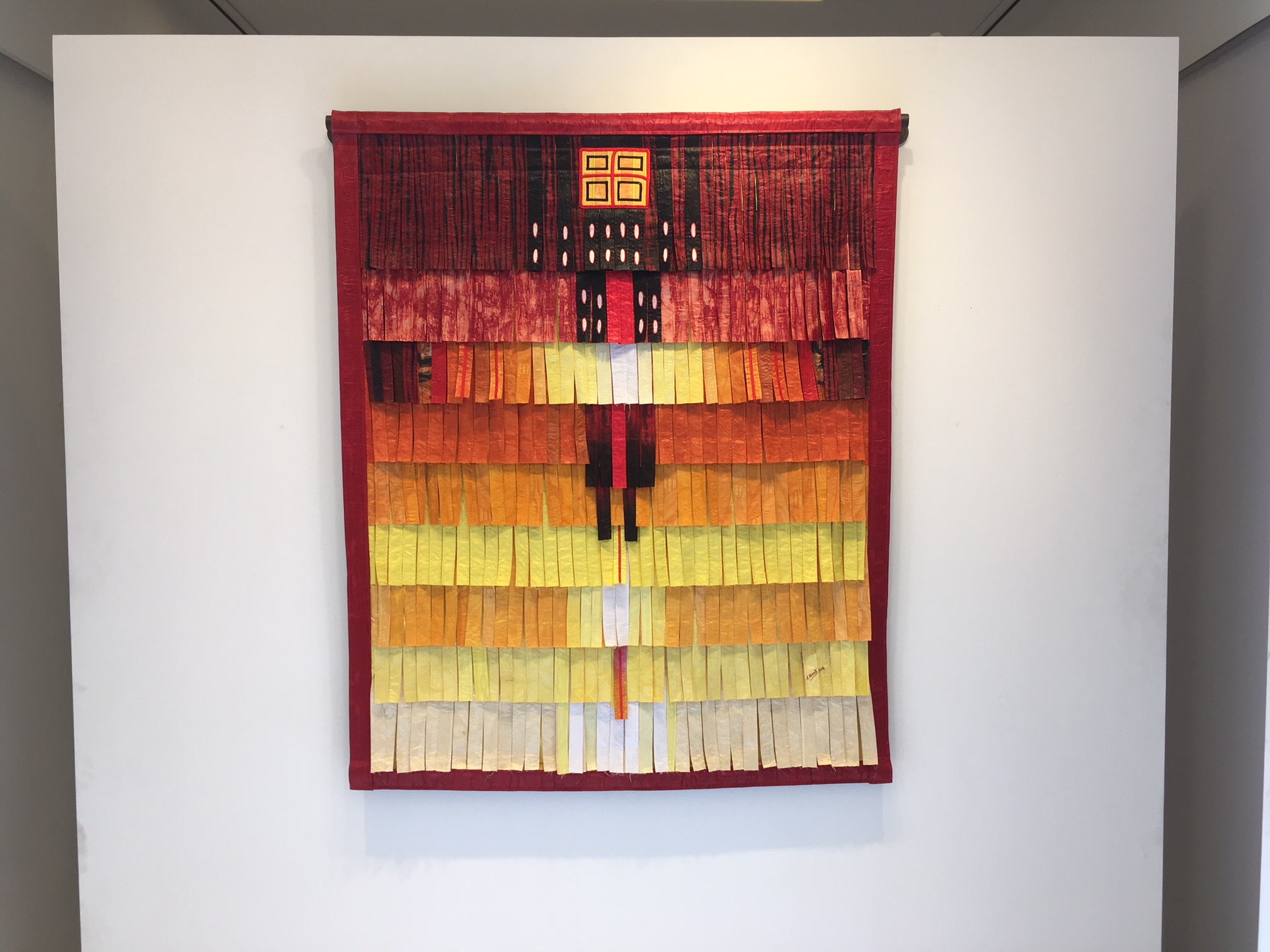Abdoulaye Konaté, one of the most eminent West African artists of his generation, was born in 1953 in Diré, Mali and currently works in Bamako. He trained as a painter in Bamako’s National National Institute of Art (1972-1976) and the Instituto Superior de Arte in Havana (1978-1985). On his return to Mali, he substituted easel painting for textiles, drawing from the West African tradition of communication and commemoration through embroidered and stitched textiles.
Fabric has symbolic value within many African belief systems. Konaté has mentioned the costumes of Senufo musicians and of the Koredugaw ritual as specific sources of inspiration. Critics have also seen the Malian hunting tunic of the Mandé as a primary influence. This garment is believed to render the wearer with unique powers to evade danger, a power granted with the inclusion of Gris-Gris (amulets). As his work evolved, he started moving away from aesthetics that hinted towards the hunting tunic and instead focused on more abstract quotations of its history, structure and meaning.
Above all, Konaté is a storyteller. He is a keen observer and critical thinker, yet kind in his recounting. He does not shy away from complex and problematic issues, such as the AIDS epidemic, military conflict, faith, ecological shifts and the effects of globalization. On the contrary, he focuses his attention and directs ours towards them through vivid textile compositions that appeal to us for their sheer beauty, and retain us with the deepness of their message. His work celebrates a rich cultural tradition and, at the same time, remains open to all kinds of influences. He is a complex artist concerned with some of the gravest contemporary issues, yet his approach is kind, uplifting and empty of despair.
Besides his artistic career, he is a crucial figure in Mali’s cultural life. He worked as a designer for Bamako’s National Museum and, in 1998, he was named director of the Palais de la Culture. Since then he has also held posts as the director of the Recontres de la Photo de Bamako and the Conservatoire des Arts et Metiers Multimedia Balla Fasseké Kouyate, which he founded.
Ocre jaune
Like many of Konaté’s most recent works, Ocre jaune (2018) draws on the striking plumage of the guinea fowl, a bird that is imbued with mythical symbolism in sub-Saharan Africa and figures prominently in Malian tales, legends, theatre and literature. The different shades of ochre and umber are a reference to the colors of the Malian landscape. Konaté bares witness to the world around him; and his artworks offer this world back to the spectator through a dialogue of visual language that meshes painting and writing, surface and volume, beauty and reflection. The material world is turned into visual poetry written in fabric.
Within Konaté’s textile compositions we are confronted with fabric as paint and fabric as sculpture. They offer a very sophisticated play between surface and depth. In Elsa Guily’s words, “Viewed face on, the accumulation and superimposing of strips creates a surprising optical effect and makes us think o the touch of a paintbrush. Exploring the esthetic wealth of the textile cloth, its delicate visual and tactile qualities, Konaté works with it in a painterly manner.”
He works in a studio with four assistants and his works are created with a system of ribbons he has developed over many years. He first sketches his ideas, from which his studio begins to make the work to full scale, working on the floor and progressing horizontally. He buys the fabrics directly from the dyers located next to his studio. Although the fabrics may vary, they are predominantly cotton based; a material of great significance, in the sense that cotton is both an important export for Mali (producing over 500.000 tons of cotton per year) and part of the identity of the nation. His assistants are the ones who stitch each strip to the backdrop cloth panel, by using long horizontal lines drawn as guidelines for the layering of the strips. Konaté finishes his pieces by hand-embroidering his signature, an element that adds to the painterly quality of his woks.


